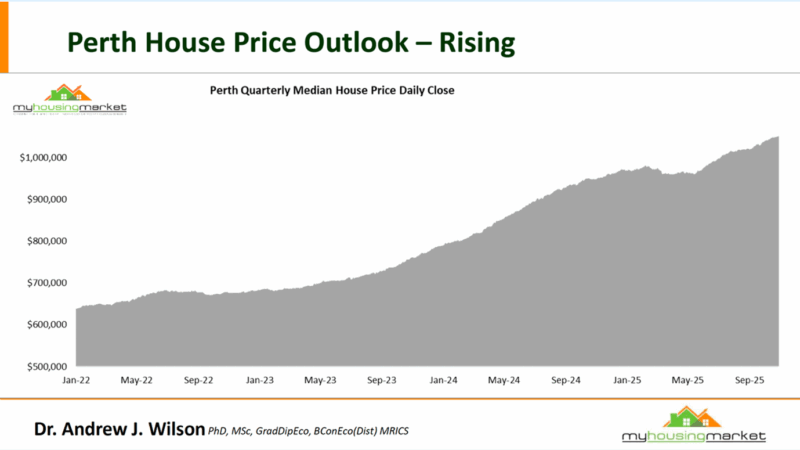
Key takeaways
The latest ABS data shows annual inflation jumped from 2.1% to 3.2% in the September quarter.
More concerningly, the RBA’s preferred trimmed mean measure rose from 2.7% to 3.0%, well above expectations — effectively killing off any chance of an interest rate cut soon.
Electricity prices soared nearly 34% year-on-year, and fuel rose 2.8% in September after a brief dip.
The end of government energy rebates has exposed the true underlying costs, which are now flowing directly into inflation. These cost pressures are structural rather than demand-driven.
Dr. Andrew Wilson argues that raising or lowering interest rates will do little to control inflation caused by energy and fuel prices — external, supply-side factors beyond domestic monetary policy control.
While global oil prices have stabilised at around half their 2022 peaks, electricity prices remain unpredictable due to Australia’s energy transition challenges, reduced subsidies, and international supply dynamics.
This means inflation could remain elevated longer than expected.
All major capital city markets are still recording price growth, defying expectations.
Last week’s inflation result has all but eliminated the chance of another interest rate cut in the foreseeable future.
Yet our major capital city property markets continue to show significant strength.
The federal government insists it has devoted considerable resources toward fighting inflation.
And the Reserve Bank pushed interest rates up 12 times between May 2022 and December 2023 to ensure it did what was necessary to keep inflation from running away.
And yet, last week the ABS reported that underlying or core inflation, which had gradually declined recently, turned around and headed back up.
Many fingers are pointed at rising electricity costs, so to understand what's really going on with inflation and what that means for our housing markets, Dr Andrew Wilson unpack the latest results in this week’s Property Insiders chat.
He also gives us a state-by-state outlook for the housing markets, showing a new set of charts highlighting daily changes property values.
Inflation is now outside the Reserve Bank's target range
Watch this week's Property Insider chat as Dr. Andrew Wilson explains how Australia’s inflation dragon has returned and put the final nail in the coffin of hopes for further rate cuts this year.
The latest inflation data from the ABS revealed annual price rises re-accelerated from 2.1% to 3.2% in the September quarter.
Over the last few months, in these weekly Property Insider chats, Dr Andrew Wilson has explained how the roll-off of energy rebates would push up inflation. But few expected the headline rate to jump so high.
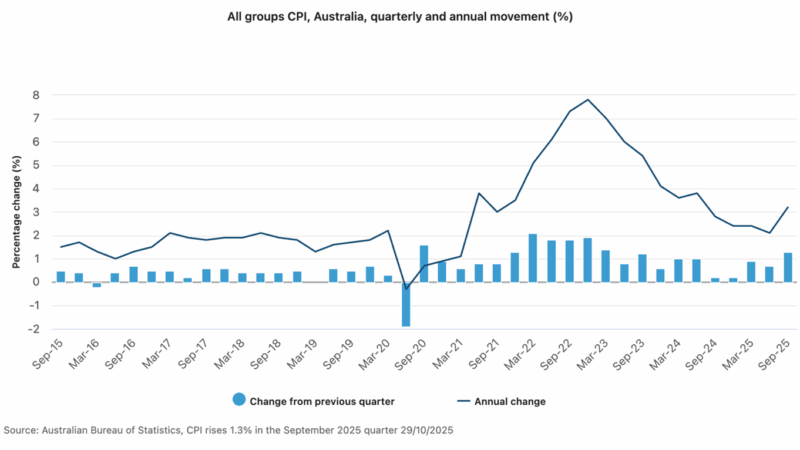
But the more sinister reading was the underlying annual ‘trimmed mean' rate (the RBA’s preferred measure because it excludes volatile items), which lifted from 2.7% to 3.0%. The RBA expected it to be 2.5%.
The culprits? No surprises here – electricity and fuel.
Electricity prices surged nearly 34% over the year, up sharply from 25% in August, as government subsidies were wound back.
Fuel prices also jumped from a small monthly decline in August to a 2.8% rise in September.
While some economists believe the next change in interest rates may be up, not down, watch and hear why Dr. Andrew Wilson believes interest rates are not going to affect inflation anywhere near as much as electricity and fuel prices.

The following chart shows an interesting trend between electricity prices and inflation and shows how removing the electricity price subsidies has affected inflation.
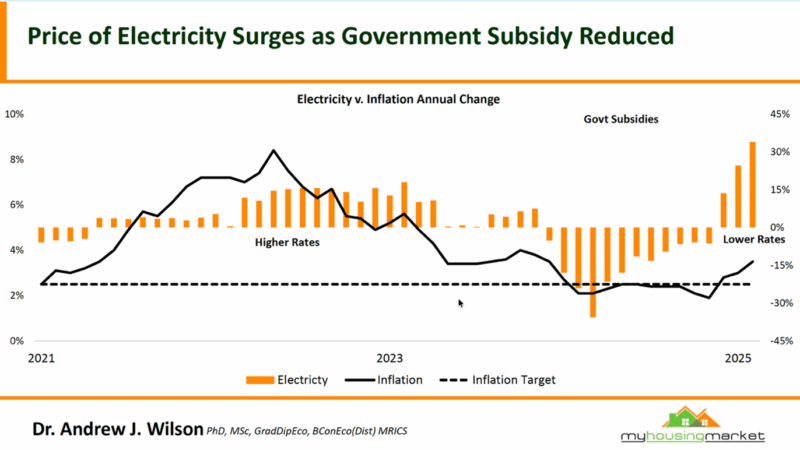
Energy volatility is still the wildcard
While oil prices have eased considerably from their 2022 peaks - now around half their previous highs - electricity prices remain volatile.
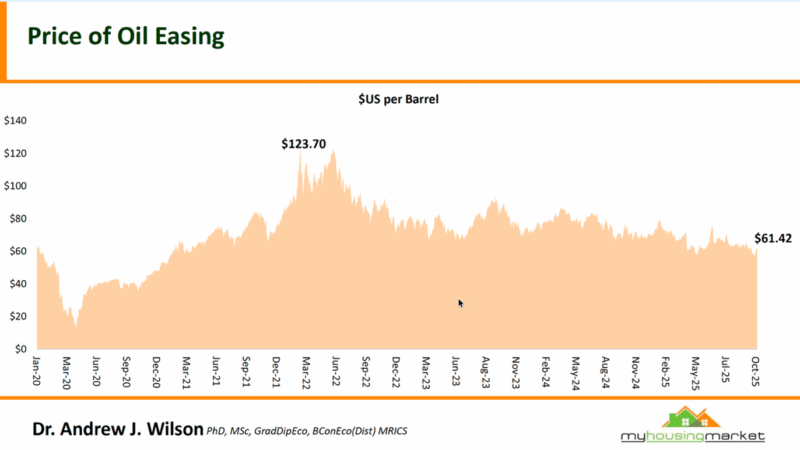
That’s partly due to global market dynamics, but particularly due to our own energy transition challenges and reduced government support.
As Dr. Wilson highlights, the removal of subsidies has effectively “unmasked” higher underlying costs, which are now flowing through to headline inflation.
This is the classic push-pull dynamic we’ve seen since COVID: global supply disruptions on one side, domestic cost pressures on the other.
In simple terms, inflation is no longer being driven by booming demand - it’s being driven by expensive necessities.
Yet property prices keep rising
Despite all that, property prices are rising across every capital city
Watch this week's Property Insider video chat as Dr Andrew Wilson gives his outlook for each capital city for both houses and units.
He shares a new set of charts giving the daily closing price for houses and apartments in each capital city.
Sydney remains the standout, with solid gains underpinned by strong population growth, limited listings, and ongoing buyer competition.
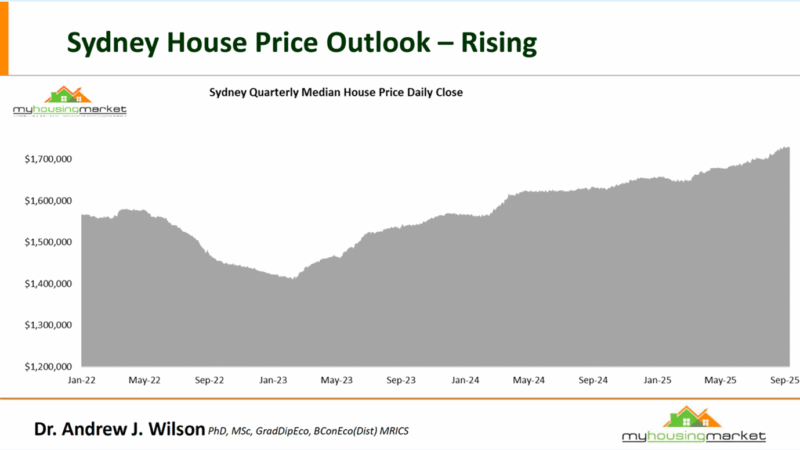
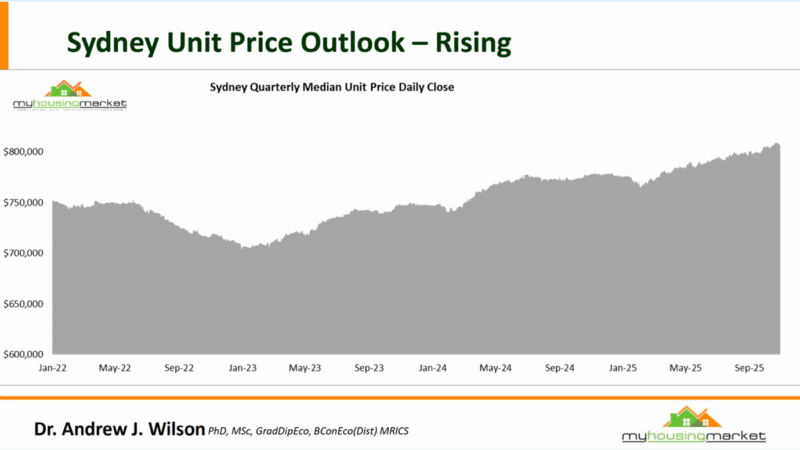
Melbourne, while lagging slightly, is quietly recovering, and for savvy investors, that may actually be where the best opportunities lie over the next 12 months.
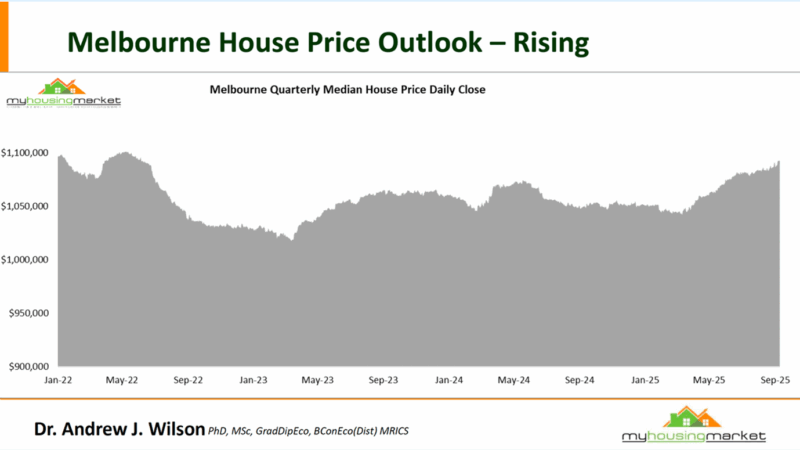
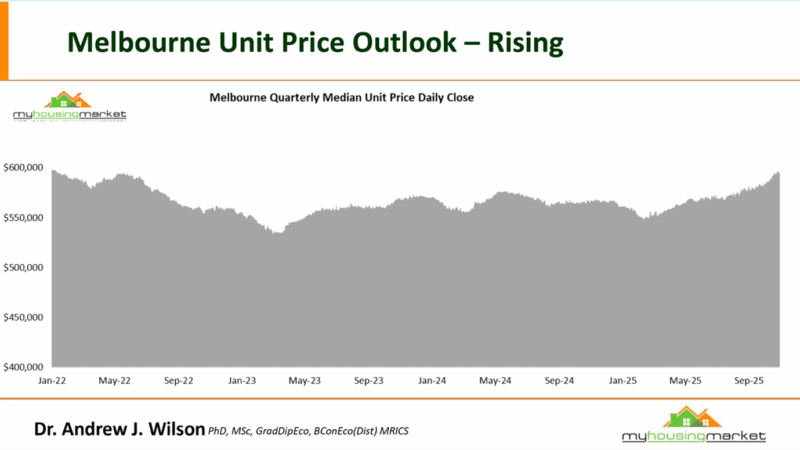
Brisbane continues its impressive run too, supported by robust migration inflows and ongoing lifestyle appeal.

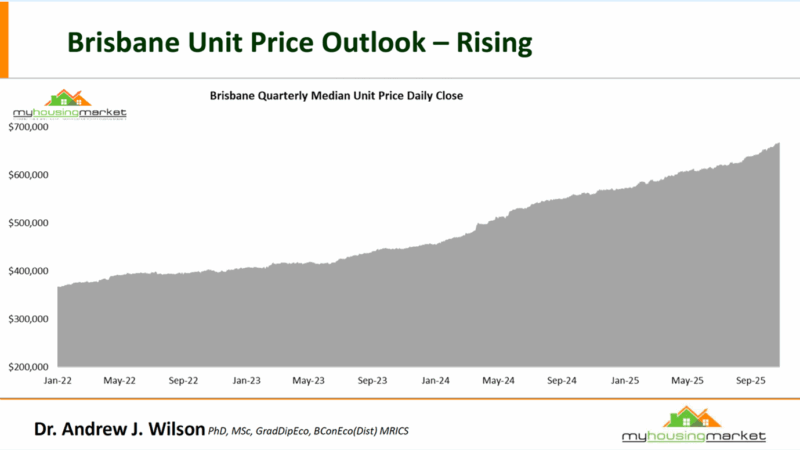
The Adelaide housing market has been a standout performer for the last couple of years, and after a little dip at the beginning of this year, it has picked up again.
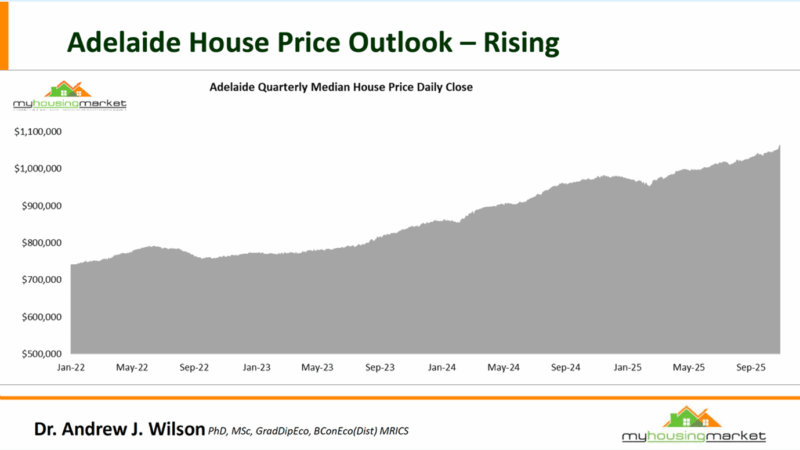
And the Perth house price outlook remains firm as the following chart suggests.
